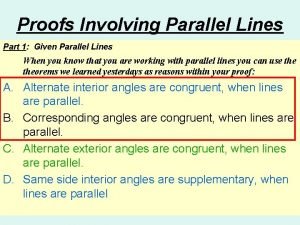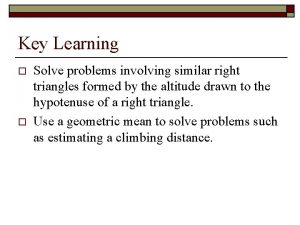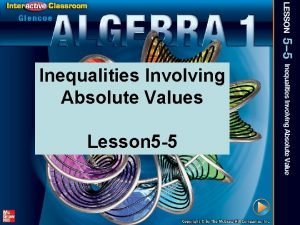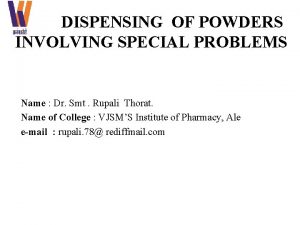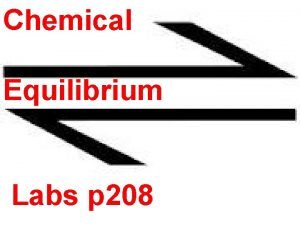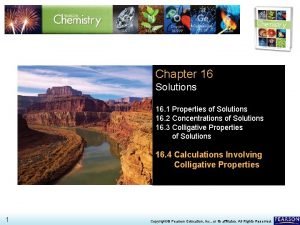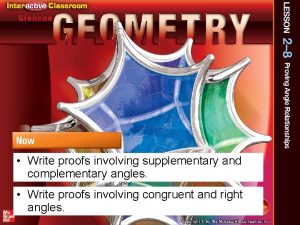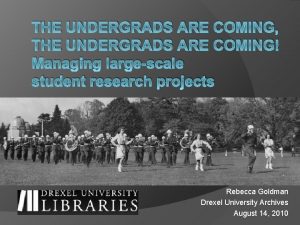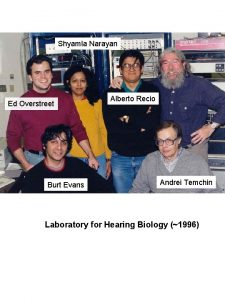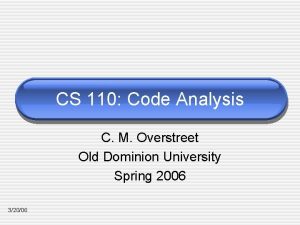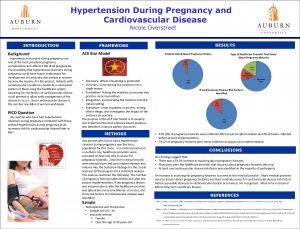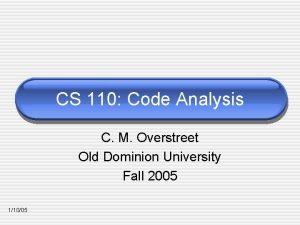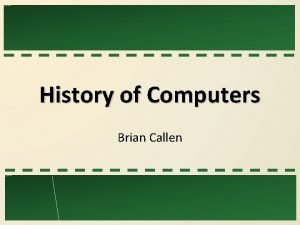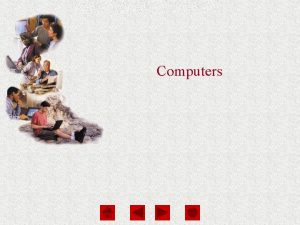Involving Undergrads in Research Mike Overstreet Computers Science











- Slides: 11

Involving Undergrads in Research Mike Overstreet Computers Science February 8, 2002

Outline Context: project description n Types of student involvement n Our experiences n Funding possibilities n

Background n n Faculty: K. Maly (PI) H. Abdel-Wahab, C. Wild, A. Gupta, M. Overstreet Project: Interactive Remote Instruction n Construct a “virtual” classroom where students can freely interact with • instructor • other class members • class materials n n Understand how to use new capabilities Understand support infrastructure needed

IRI-h Classroom; one site Imagine people at home, at work, at ODU sites (Penn, Va. Bch)

IRI-h screen

Unfunded student participation: n Evaluation of IRI as teaching/ learning tool n By taking classes through IRI • provide informal feedback n By participation in formal evaluation studies • Ph. D in education: more interaction in IRI or in traditional classroom?

Funded student participation n Code Testing n n Help locate bugs Experimentation n Performance studies • e. g. response time vs number of participants n Code development n n Support tools Lots of web development Documentation evaluation and revision Documentation development

Benefits to researcher n Some risks n n n Some students require more supervision than others No different from grad students Takes time, regardless Taylor tasks to student’s strengths Need to find “independent” tasks In summary, we’ve gotten a great deal from these students; most made significant contributions to the project

Benefits to funded students n n n n Use of cutting-edge technologies Access to “neat” toys Exposure to some complexities of “real” software projects Genuine excitement about participation Opportunity to learn new skills Closer interaction with project faculty and gifted grad students Gratifying for something they’ve developed to really be used n unlike class homework

Benefits to unfunded students n n Use of cutting-edge technologies Access to “neat” toys Genuine excitement about participation (though this is not universal) Opportunity to learn new skills More mixed response: some “bleedingedge” effects

NSF funding: Research Experience for Undergrads n 2 forms of funding: n New grant with primary goal of involving undergrads in research • due 9/15 of each year for REU “sites” n Supplements existing NSF grant to support undergrads • due dates vary n www. nsf. gov, search for REU
 My favorite school subject
My favorite school subject Gatsby chapter 3 quiz
Gatsby chapter 3 quiz He is the black sheep in the family figure of speech
He is the black sheep in the family figure of speech Problem solving involving temperature
Problem solving involving temperature Proofs involving parallel lines
Proofs involving parallel lines Word problems involving similar triangles
Word problems involving similar triangles 5-5 practice inequalities involving absolute value answers
5-5 practice inequalities involving absolute value answers Example of hygroscopic powder
Example of hygroscopic powder Thymol blue equilibrium lab
Thymol blue equilibrium lab Solving linear inequalities involving absolute value
Solving linear inequalities involving absolute value Colligative properties sample problems
Colligative properties sample problems Proofs involving angles
Proofs involving angles




